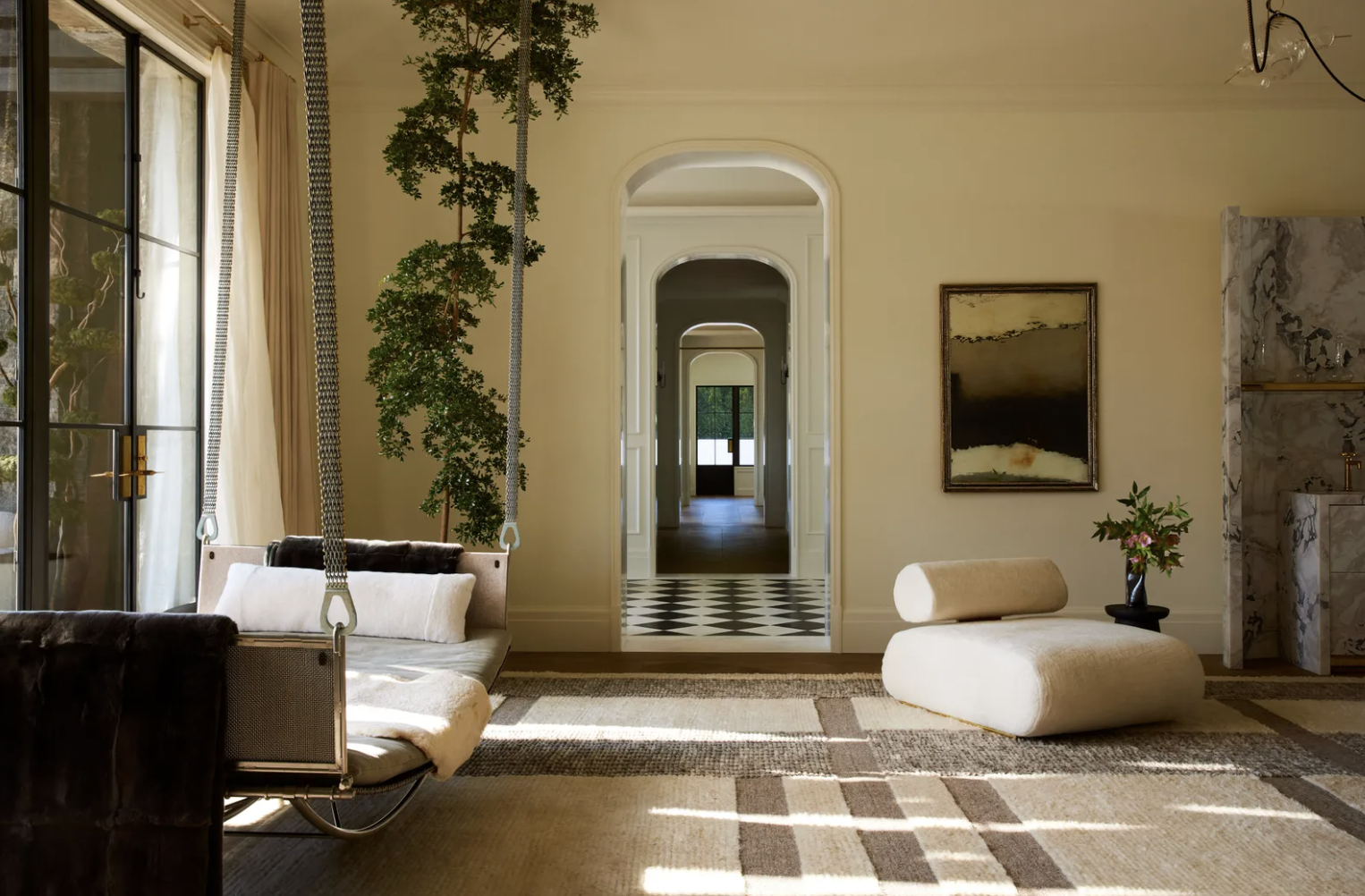The year 2021 saw the interior design industry shift in major ways to respond to a world impacted by COVID-19. After nearly two years of distance and isolation, a renewed desire for intimacy is shaking up interiors. We’re witnessing a sea change in design attitudes and decoration. Today’s homeowners are focused on creating design for the long haul, calling for a shift and reset in modern decorating culture. We want handmade finishes, friendly curves, a timeworn, cosy feel for renewed intimacy. It’s also a chance to create a design world that is accessible. Think about creating a new interior but doing it right from day one.
“Being too aspirational is repellent now,” the Guardian reported in August 2021.
And it is filtering into our homes, where we have an opportunity to craft looks and design around core values and relatability. We are setting new interior standards by celebrating interior “imperfections.” Unlike in the past, where interiors were smoothed to perfection with pristine, white, symmetrical rooms, we are welcoming flaws, simplicity and reality in 2022.
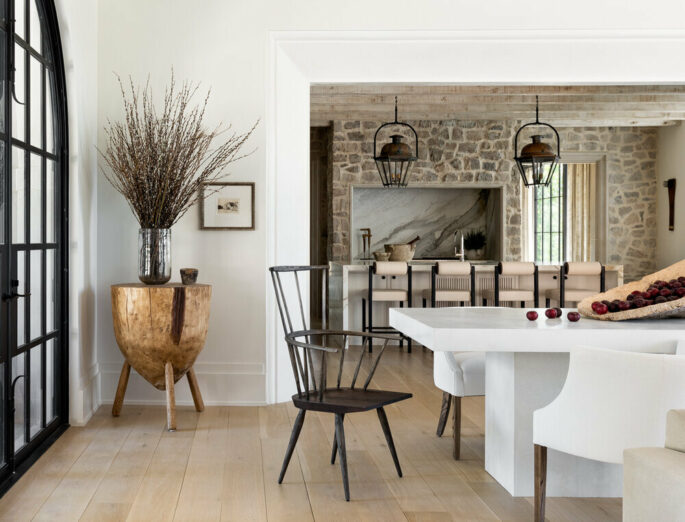
Homes are projecting a progressive and positive outlook for 2022. Design: Sean Anderson, Vestavia Hills Alabama project, seanandersondesign.com
We are shifting our priorities, and humanising homes for 2022.
We’re continuing to lean into our personal tastes and needs. “We are living in the future where individuality and confidence rule, Jean Lin, founder and curator of Colony, a New York City design cooperative, gallery, and studio that represents independent furniture, lighting, textile, and object designers, shares a similar outlook. “There is a movement against the big-box retailers that pushes back on the homogenization of our homes and design in general,” Lin says. “We are settling for what’s readily available less and less—and seeking out our most expressive and genuine lives at home.” In the new design era, consumers no longer see their homes as serving one core purpose. People want deeper experiences with their homes. Read more, ‘The Big-Picture Home Design Trends Taking Off Right Now.’
Look Of The Year
Since slowing down has given people the opportunity to explore hands-on activities like ceramics, painting, and baking, we’ve seen an increased desire towards craft pieces that can be appreciated even more now that there’s an understanding of how challenging they are to make.
Another powerful impulse among designers and collectors alike is the desire to surround oneself with handcrafted, artisanal objects—both old and new.
Abby Bangser, founder of the art and design fair Object + Thing, says that lately there’s “an interest in handmade and crafted objects, collected over time, so there’s more potential in a homeowner’s personality coming out through the objects they’re surrounding themselves with.” In a sense, it’s due to the uniqueness and personal touch of each thing: “Maybe that goes back to how conscious we are of our humanity right now, due to the pandemice—these objects that we live with are made by real people.
Objects that were once used quite humbly—and very much “below stairs” are as popular as ever. “Primitive utilitarian items like wood milking stools, carved dough bowls, and beautiful worn cutting boards are on trend. They transcend periods and styles perfectly at home in a traditional or modern interior. Read more, ’12 Predictions For A Happy Home, 2022.’

This could be the restoration era: repairing planet and people one conscious choice at a time. Our freedom to survive, let alone thrive, depends upon those choices. Photo Credit: Sean Anderson Design, Vestavia Hills Alabama project, seanandersondesign.com
The Vibe of the Year
Demanding renovators are out, and patience is in. We’ve all gone through this stressful, anxious couple of years, and there’s a willingness to have some empathy and understanding. Beyond the big trends are a long list of smaller ones: the growing popularity of biofabricated materials like tea leaves, pineapple leaves, nut husks, and Mexican cacti into desirable things. And look for a burst of strong interest in heritage items, clear provenance, and things with ecological credentials we can sit on in our homes. Read more, ‘The Top Interior Design Trends for 2022.’
Encouraging Playfulness + Creativity
Homes are projecting a progressive and positive outlook for 2022. After an unpredictable two years, we are channeling a creative playfulness that symbolizes growth and freedom. Colours and design directions are solidifying this energizing spirit that is trickling into homes. There’s an incredible consumer appetite for this sense of awe, wonder, inspiration and creativity that really grounds us and has an underlying strength to it. Read more, ‘9 Design Trends We Will Be Seeing In The Very Near Future.’
The playfulness really comes from long-term consumer exhaustion—needing a touch of relief, and touch of entertainment in our homes.
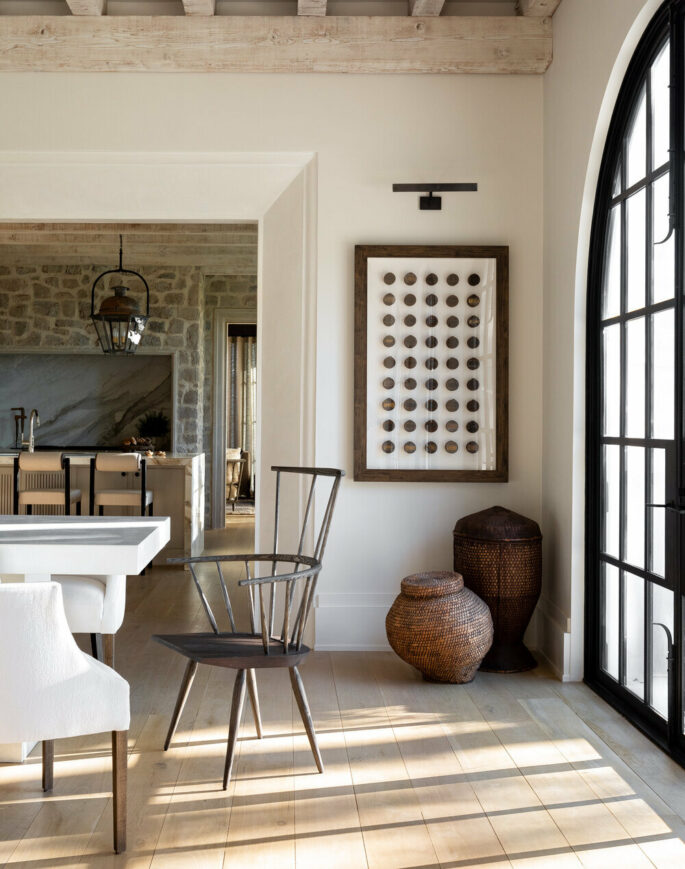
We’re continuing to lean into our personal tastes and needs. Photo Credit: Sean Anderson Design, Vestavia Hills Alabama project, seanandersondesign.com
In Pursuit of Health and Wellness
Living life intentionally, with moderation and community in mind, has brought lifestyles into the mainstream, as many around the world attempt to adopt more holistic wellness habits. Due to a heightened focus on health, consumers are looking for healthy habits at home. Read more, ‘The Big Picture Home Designs Taking Off Right Now.’
Edible Escapism
In search of outlets for their wanderlust, travellers are now turning to the kitchen. With travel still not possible or appealing for many, people are opting to take their taste buds for a trip, driving a wave of globally inspired eating experiences at home.

Today’s acutely aware consumer wants to literally sit on their ecological credentials in their homes. Photo credit: Sean Anderson, Vestavia Hills Alabama project, seanandersondesign.com
2021 was Not a year for Trends: It was a Year of Uncomfortable Truths
Michelle Ogundehin, a thought leader on interiors and former editor-in-chief of ELLE Decoration UK, proposes 2021 as “the year for the interiors equivalent of speaking your own truth” and understanding “that the best homes are about the feeling they give you not the stuff they contain, the ‘right’ colours or ‘hot’ looks.” “The most poignant of these was that we are all products of our environment. And we were making a right mess of ours. Not just on the wider climate scale, but also domestically.”
Her message is simple: what surrounds you affects you.
And while many of us know this intuitively, for the scientifically inclined, there’s a Stanford University study, Ogundehin cites that proves environment is more important than genetics in determining the strength of your immune system.
Most Fashionable Trends are Simply Manufacturer Dictated Newness
In other words, homes that reflect an occupant’s authentic likes and lives rather than being determined by anything dictated externally. “In truth, most “fashionable” trends are simply manufacturer dictated “newness” designed, in the loosest sense of the word, to shift product,” says Ogundehin. “But there are also bigger shifts that underly these seasonal fluctuations. These are the lateral moves we make as a society (highlighted by consumer research, or early adopters) that eventually bubble up to the mainstream as potent influencing factors. These are the “trends” worthy of comment.”
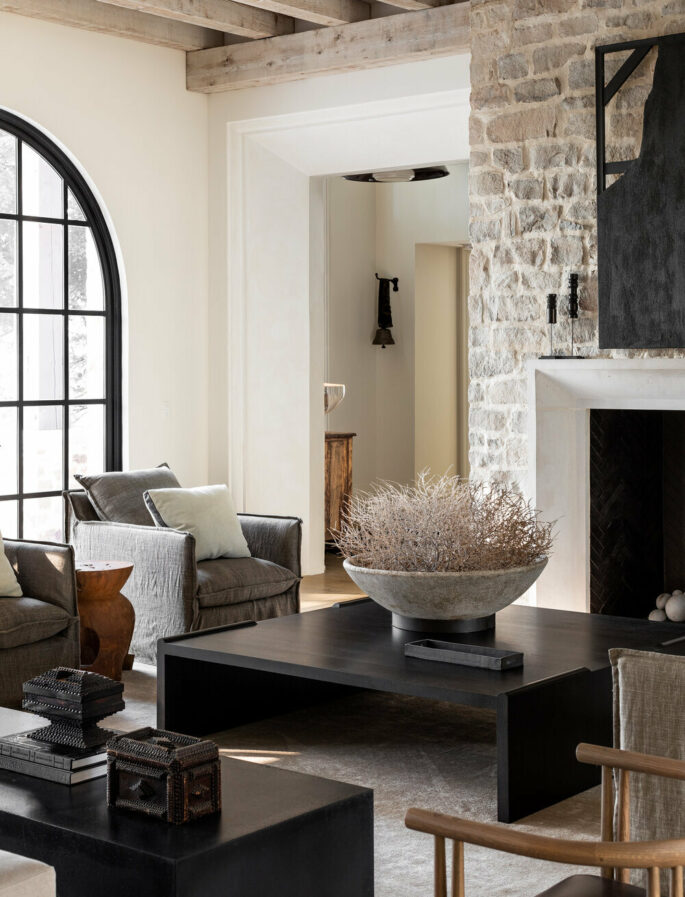
Demanding renovators are out, and patience is in. Photo Credit: Sean Anderson, Vestavia Hills Alabama project, seanandersondesign.com
Right Now, Sustainability is the Obvious Thread Connecting Anything Relevant for 2022
It’s finally dawning on the majority that it’s less about the planet being in jeopardy, than us. The planet has seen worse, we have not, says Ogundehin in her trend report for Dezeen magazine. “We are the ones in danger of extinction. It’s not too late to do something about it.”
The power rests on the everyman and the nudges for change we can make as individuals. A 2020 report by IBM Institute for Business Value showed that six out of 10 consumers are ready to change their purchasing behaviour to minimise their environmental footprint. This has power because options exist, consumers switch and such direct impact on corporate bottom lines forces change. Today the only question worth asking any brand, supplier or corporation is simply, can you make what you do responsibly, as standard, for our homes, ie without endangering our air, waterways, animal or marine life? Because if you can’t, we don’t want you. Read more, ‘Going Full Circle: An Ultra Simple Approach to Sustainability.’
Prioritizing eco-friendly materials and bringing plants indoors will be massive this year.

Due to a heightened focus on health, consumers are looking for healthy habits at home. Photo Credit: Sean Anderson, Vestavia Hills Alabama project, seanandersondesign.com
The Demise of Normal Design
A new inclusive lexicon is redefining the design industry, making room for more individualized and accepting expressions and interpretations of design. The concept of a one-size-fits-all decorating ideal has been thrown out the window— and there’s no going back. In the new design era, consumers no longer see their homes as serving one core purpose. Read more, ‘How Coronavirus Will Change in The Next Decade.’
People want deeper experiences with their homes.
Say Bye-Bye to Pared-down Interiors Devoid of Personal effects
People are keen to see a place that has been lived in and loved that tells a story with abstract art, iconic vintage seating and lighting from the last century, wood, leather and other natural finishes, bold and large-scale organic patterns.
Playful Pastimes Will Rise Again
2022 is all about bringing your inner child out to play. Indoor swings, useful crafts and fairy bedroom ideas will keep the big kids young at heart, say Pinterest.
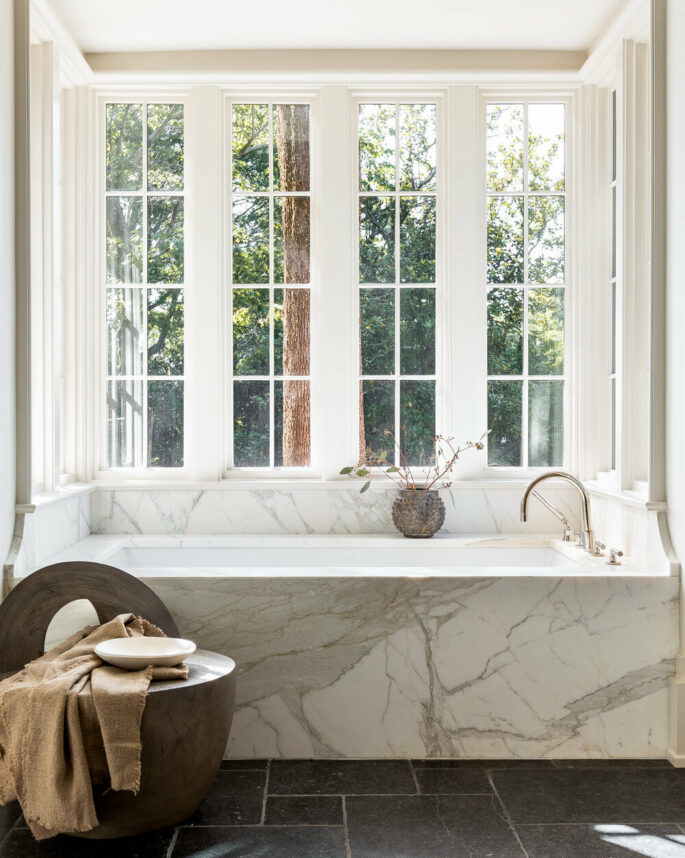
Sean Anderson, Vestavia Hills Alabama project, seanandersondesign.com
Any Period of Sobriety is Generally followed by Heady Abandonment
The tide is turning and decoratively speaking, there is the return of unbridled frivolity, joy, and a dose of the pretty. This makes sense; it represents an element of release after being so tightly wound. Any period of sobriety is generally followed by heady abandonment; denial begets indulgence — consider the Roaring 20s after world war one. Cue then rooms drenched in full-throttle colour and joyous prints applied with enthusiastic abandon to walls, floors, and ceilings.
Think wallpaper and rugs to parquetry and narrative mosiacs.
The success of the Netflix romp Bridgerton Netflix romp Bridgerton was the torchbearer for this. First aired on Christmas Day 2020, it clocked 82 million viewing households in its first 28 days (by the streamering company’s own reckoning). Steamy, indulgent and diverse, it was viewing manna for the sensory-starved and lockdowned at home.
Stylistically speaking, it was also just incredibly pleasing to watch, all wisteria-drenched porticos, torch-lit colonnades, garden gazebos and pastel silks.

Sean Anderson, Vestavia Hills Alabama project, seanandersondesign.com
Waste Made Wonderful: Homes are Redesigning their Experiences to be Less Damaging to the Environment
Set in the homes of England’s 19th-century Regency elite, for the wealthy this was a period of artful elegance and decoration for the sake of it, founded on classical tropes but inspired by Egypt to India. The country was ruled by the fiscally extravagant, culturally adept and party-loving Prince Regent and life in the upper echelons was lush, fun and romantic.
An eagerly anticipated second series of the show will premiere on March 25, 2022. Rest assured this sentimental recolouring of history will prompt a Neo-Regency as we freshly appreciate the uplifting potential of architectural adornment, both inside and out. Rather than toxic tanneries and slaughtered animals we have pineapple leaves (Piñatex) and Mexican cacti (Desserto) being turned into leather substitutes. Meanwhile, everything from discarded coffee grounds and shrimp shells, tea leaves and nut husks are being made into desirable products that are good for the planet.
The evolving wave of biofabricated materials taps into this romantic milieu too.
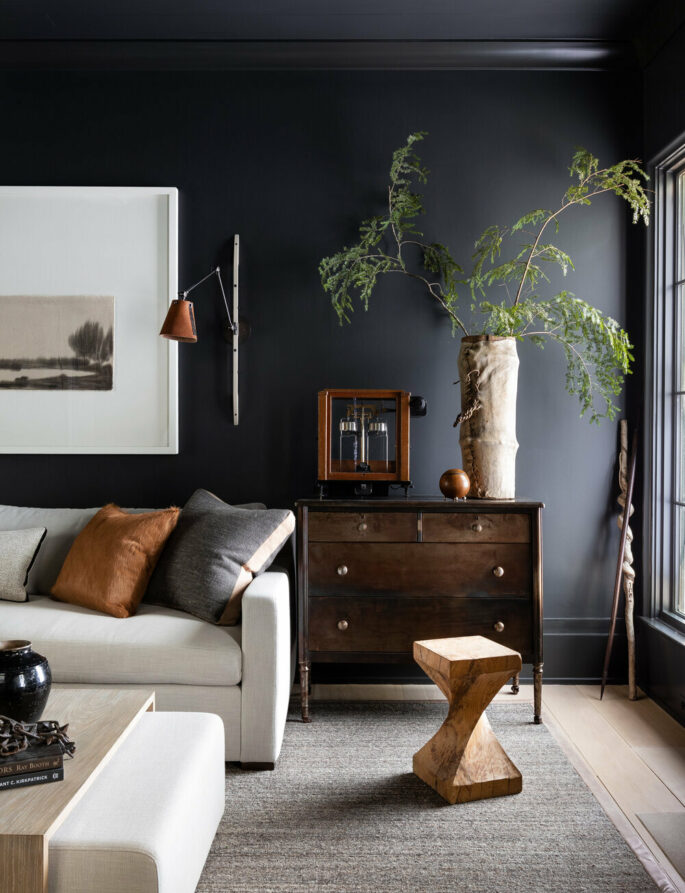
Prioritizing eco-friendly materials and bringing plants indoors will be massive this year. Photo Credit: Sean Anderson, Vestavia Hills Alabama project, seanandersondesign.com
Repair, Recycle and Re-Use will Predominate with Emphasis on the Uniqueness of the Product
Waste made wonderful will be essential to support our new sustainable homes. After all, we still want to buy lovely things but we need to do so in a way that gives back.
Even at the luxury end of the market, notions of repair, recycling, and re-use will predominate with an emphasis on the uniqueness of the remade product. There will be no loss of style or quality. It will be the same artisans crafting the products. But the desire to own brand new no longer carries the allure it once did. Pandemic-weary households are embracing a trend for nostalgia and look longingly back at times past.
We want heritage, stories and clear provenance instead. Plus, today’s acutely aware consumer wants to literally sit on their ecological credentials in their homes.
A Lot of the Big Trends of the Last 10 Years were Driven by Technologically Enhanced Convenience
From homes designed for Friluftsliv — the Nordic ideal of being outdoors in all weathers — to IKEA pledging to be a totally circular and climate positive business by 2030, and Hempcrete coming through as a credible alternative to concrete, the new normal home-making experience is changing. Even long-term furniture rental, rather than purchase, is gathering steam. So much so that British high street stalwart John Lewis is getting in on the act, partnering with Fat Llama, the world’s largest rental marketplace to offer a flexible, affordable way to experiment at home without waste. It all adds up to a reason for hope.
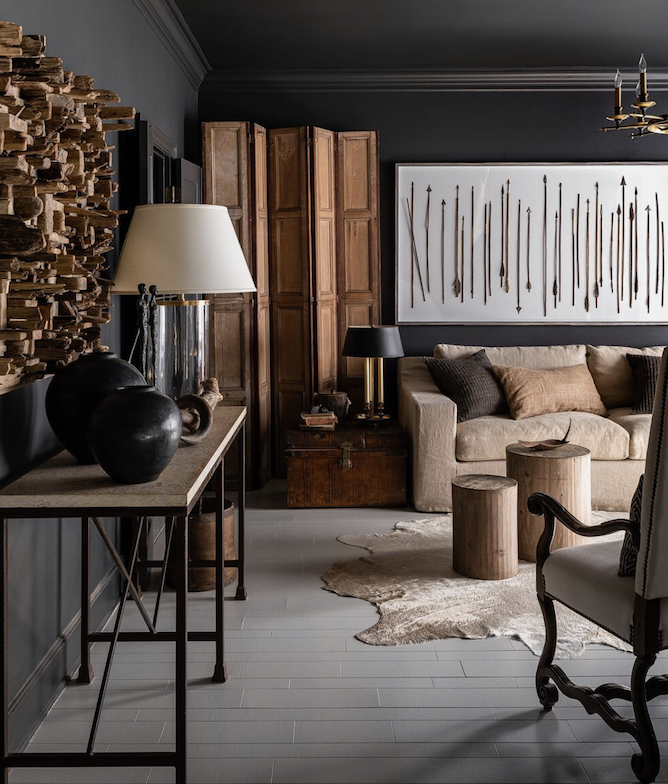
Even at the luxury end of the market, notions of repair, recycling, and re-use will predominate with an emphasis on the uniqueness of the remade product. Photo Credit: Sean Anderson Design
It’s Time to Reconsider the Whole Colour of The Year Carnival
In summary, a lot of the big trends of the last ten years were driven by technologically enhanced convenience. We wanted everything quicker, smaller, faster and yesterday, regardless of the consequences. Life sped up to keep pace, and cover-up, smooth out, quick-fix solutions were the go-to (from surface finishes to cladding via the feature wall) and damn the consequences.
We’re paying for that now. As the anthropologist and primatologist, Jane Goodall says in her newly released, The Book of Hope, authored with Douglas Abrams and Gail Hudson, “If we keep pulling threads from the tapestry of life it will disintegrate and we will lose what supports us.”
New Realities Hitting Home in 2022
Wisdom for the future then relies on us finally knowing our place, recognising our responsibility to the natural world. In short, for us to earn the right to stay here, there must be a new cultural revolution. “The most incredible opportunities exist right now for us,” says Ogundehin. “This could be the restoration era: repairing planet and people one conscious choice at a time. Our freedom to survive, let alone thrive, depends upon those choices.” The key to making our furniture last is good maintenance. When a scorch mark appears on a tabletop, a cane seat gives way, or a leg falls off a chair, don’t stick it in the garage, because that’s where the rot will really set in. Whip it off to a conservator, restorer or repairer. Good pieces of furniture are like faithful friends, don’t abandon them in their hour of need.
“Our homes and every single brand we bring into our homes can be a game-changing trailblazer for the greater good.”
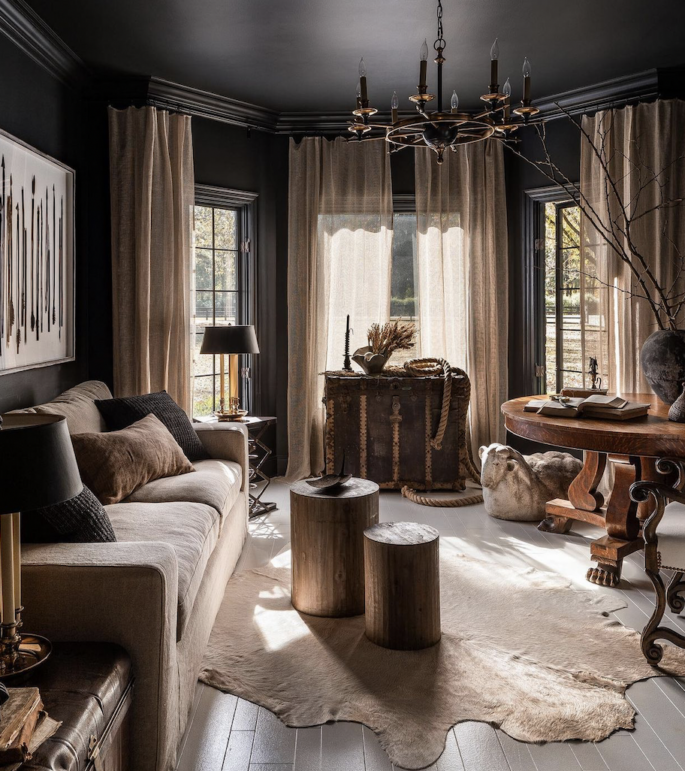
Good pieces of furniture are like faithful friends. Photo Credit: Sean Anderson Design.

